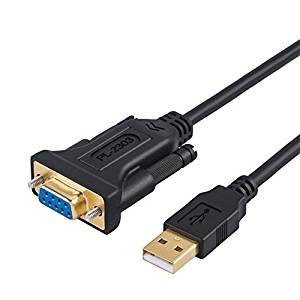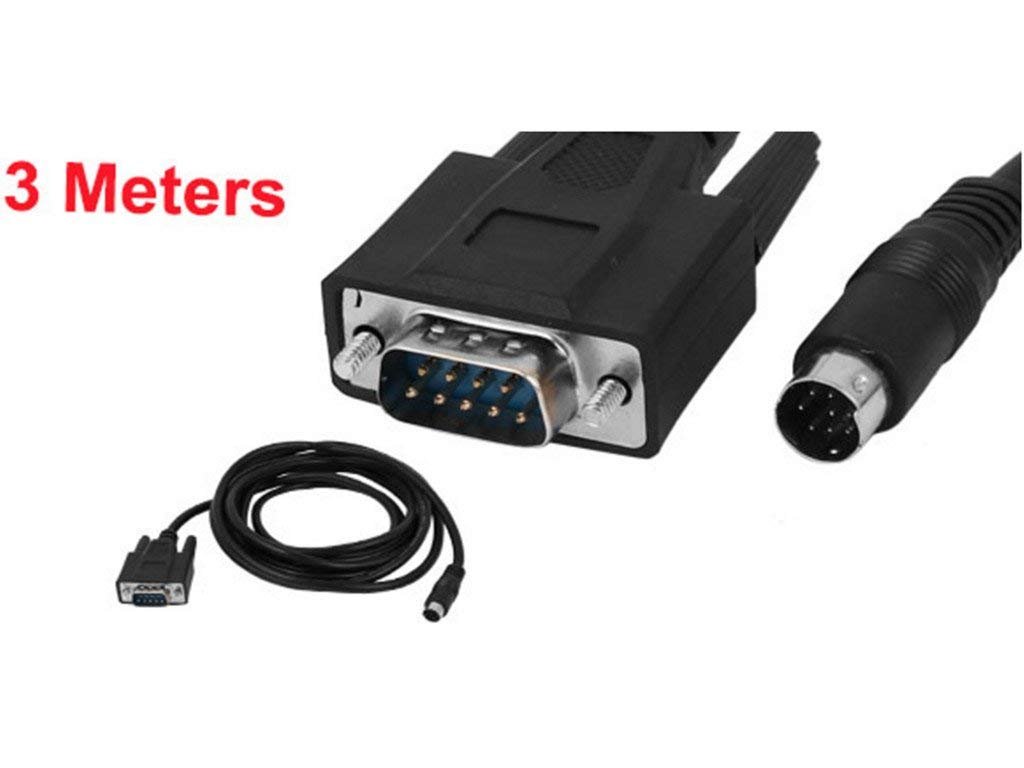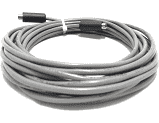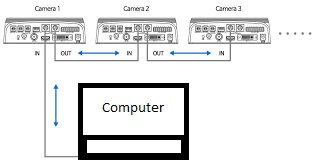The benefit of Visca cameras is that they come all in one package(head+camera) and you don’t have to worry as musc about distance because the Visca protocol runs at +12V and as far as 1000ft distance between cameras. However Visca cameras are much more expensive than the LANC solution and the moves are not as smooth as with the Bescor motorized head. The slowest visca speed with the Sony D100 Camera is the equivalent to 45-50 on the Bescor head. Visca has other nice features like position presets and image flip and. That means the camera can be mounted upside down, unlike the LANC solution which can only be upright. So far only the basic feature are implemented like on/off, zoom, auto focus and pan-tilt. Others may came in the feature.
Connecting the cameras to the computer.
Most of the time you’ll find the visca adapter composed of two adapters. You will also need a link between cameras also called visca chain cable.
- USB to Serial(rs-232) female adapter

- DB9 to 8P(visca port)

- Visca chain cable

In a serial visca setup a maximum of 8 devices can be connected or ch ained. The controlling computer takes a spot, so you can have up to 7 cameras on a chain which i think is more than enough to keep a single operator busy. Only the first camera is connected to the controlling computer, the rest are daisy chained using the chain cable from first camera OUT port to the second IN port and so on. Typically ControlBoard will assign each camera the address in the same order they are connected on the chain if all cameras are the same brand and model.
ained. The controlling computer takes a spot, so you can have up to 7 cameras on a chain which i think is more than enough to keep a single operator busy. Only the first camera is connected to the controlling computer, the rest are daisy chained using the chain cable from first camera OUT port to the second IN port and so on. Typically ControlBoard will assign each camera the address in the same order they are connected on the chain if all cameras are the same brand and model.
When operating visca cameras keep in mind that even at the slowest speeds they are much faster the than Bescor motorized head. Other than that there is no other difference in terms of setup.